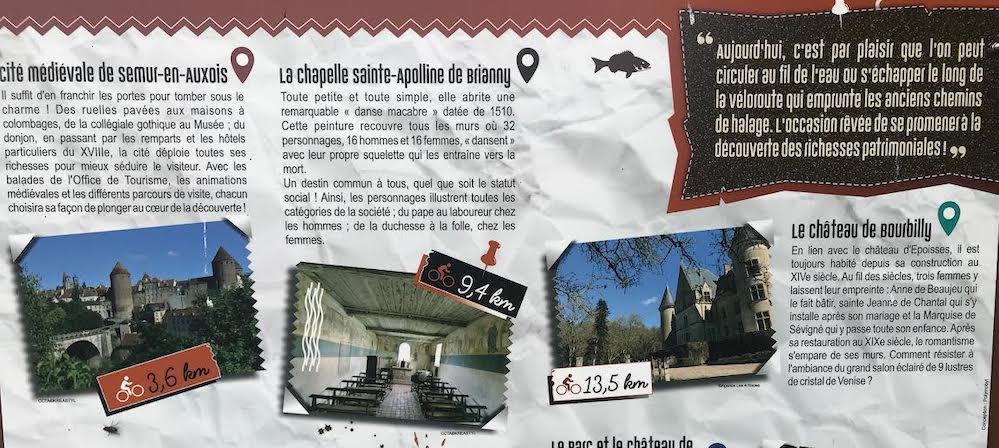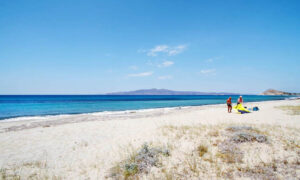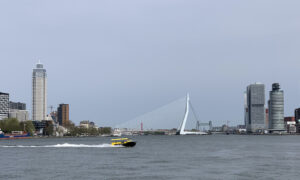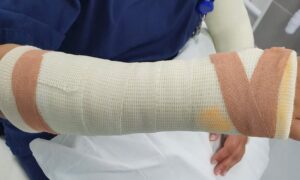(Editor’s note: We are posting about Burgundy as part of Patrimoine Weekend – 18 and 19 September – during which all of France’s major museums and sites are open to the public for free. Additionally, many private cultural locations such as castles are open to the public.)
With people reluctant to stray far from home, the desire to visit somewhere closer is gaining popularity. There is even a relatively new buzz-word for it – micro-tourism. Going on a trip that doesn’t require putting in a lot of miles sure does sound more relaxing. Maybe Robert Frost had a point. You know: “Two roads diverged in a wood and I – I took the one less traveled by, and that has made all the difference.”
Would it really “make all the difference?”
We wanted to give it a try.
Searching for the soul of France
We prepared by first stopping at the local tourist information bureau to get listings of what to see and do. We noticed that many of the brochures tout France’s patrimoine, which basically means heritage. In France, micro-tourism and patrimoine go hand in hand. It’s about local food and festivals for sure, but it’s also about the land (what is built on it and what they dig up); and is all about their way of life. It’s as if each person adds a vibrant stitch in the fabric of their cultural heritage that contributes to the material value of their country.
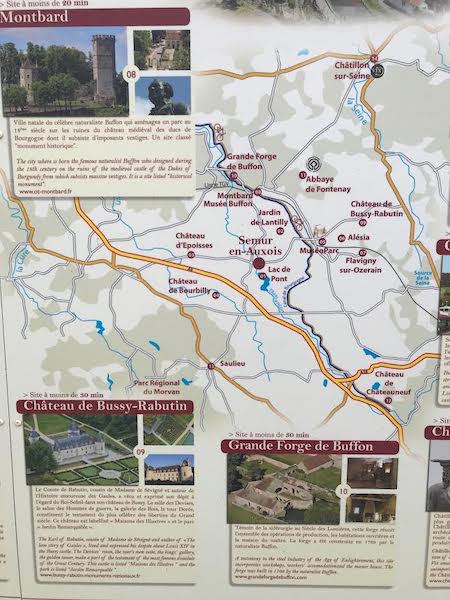
I thought, “Wow, that is pretty profound stuff, but it is possible to really quantify it?” We were on a mission to find out. So, we pulled out a detailed map, put our hands over the section of Northern Burgundy and traced a line around it. We vowed to spend two weeks within that 50-mile wide and 20-mile deep radius.
Ok, we have a starting point for our road less traveled and our micro-tour search of the elusive French patrimoine.
We programmed the GPS to follow departmental roads from my village of Bourmont. We were also armed with a guidebook listing the most beautiful villages in France, “Les Plus Beaux Villages De France” These are the towns where UNESCO lovers gather to appreciate architecture and culture. Originally published by Reader’s Digest, this guide has taken on a cult status in France for fabulous locations.
There were three of these beautiful villages within the handprint we had outlined: Flavigny-sur-Ozerain, Noyers and Vézlay. These were the towns to stop for the excellent ice cream, chat with locals over a meal in a fabulous restaurant and soak up the lovely village life. These places are phenomenal.
But, we wondered if it was possible to find an entry through an exclusive door, so to speak, that would give us a behind-the-scenes look at French life in Burgundy. We had a feeling that if we concentrated on one specific region, we might just discover something rare. We realized we needed to really slow down: Put away the technology and pay closer attention to our immediate surroundings.
And there it was.
We found the map to our hidden treasures posted on old fashioned tourist information billboards. You know, the ones you find at the entrance of a town or a campsite. We noticed them all over the place, at hike & bike trails, historic places like castles and archeological dig sites. We even found them at local beaches along the lakes and river fronts. We took snapshots of these boards with our phones and typed in the GPS coordinates. Most had QR codes linked to websites.
Voilà! Immediate access to all sorts of awesome regional must-sees.
Tiny villages, huge châteaux
Many locations were listed in type so minuscule they were practically impossible to find on road maps, but that did not stop us from searching out their whereabouts. The tip to finding these sites is to keep your eyes open for little signs as you drive down the bumpy departmental roads.
They are so small it is as if they are whispering a secret.
They typically say something like: “to find the castle, go in the direction of Druyes-les-Belles, or windmill to the left, or see Museum of Colette follow signs to St. Sauveur-en-Puisaye.” Using this technique, we found five chateaux within a 15-mile radius (Bussy-Rubtin, Frôlois, Salmaise, Thenissey and Chassey).

In Frôlois the 10th century chåteau is perched on a cliff and has been in the same family for 700 years. The owners, a kindly gentleman and his wife, offer tours during high season. We were the only people in town that day, and the owner agreed to show us around his place.
These guys had it all – a three-legged goat, a museum quality art collection and ample time to show us every detail of the family fortress. We were shown recent and old family photographs, paintings of ancestors and heard stories of invasions and alliances going all the way back to the 13th century.

They encouraged us to visit the neighboring town of Salmaise. They said it was a quality village that merited a detour. Perfect. This town also featured a clifftop castle, historic homes, a covered market, fountains and a lavoir. The grounds to the castle were open to the public, and although the residence was private, we still managed to strike up a conversation with the owner. He asked if we had visited his neighbor in Frôlois. We confirmed and gave him an update on how the aging couple was doing, chatted about the history and even gave news about the goats’ well-being.
We suddenly realized we had entered into a world that most tourists rarely access. We knew we’d gotten what we wanted from the micro-tourism concept.
We had wandered around the rural roads of Burgundy in search of historical treasures and found a hoard of resources cached away in the countryside. Best yet was that the locals were truly grateful for our interest in their heritage and were delighted we had taken the time to search them out. I suppose Robert Frost was right after all; taking “the road less traveled” freed us from the conformity of others.
Perhaps this trail we took may encourage others to take time to seek out the wealth of culture and history France has to offer. After all, it is the people who create this wonderful heritage, and meeting them was our greatest fortune.
To learn more about France’s heritage, Patrimoine Weekend is celebrated just before autumn each year. In 2021 it falls on September 18 and 19. The highlight of the event is that all of France’s major museums and sites are open to the public for free. Additionally, many private cultural locations such as castles are also open to the public.

About the author:
Alice Verberne is a journalist with more than 25 years of experience writing for magazines and newspapers in both Europe and the United States.
Alice spends her free time painting and sculpting at the Villa Vatelotte, a meeting place for artists and artisans in rural France.
See all of Alice’s posts here.
See her posts about wine here.
See more about France on Dispatches here.
Alice Verberne is a contributing writer for Dispatches Europe. She has worked in print journalism and magazine production in the United States and Europe throughout her career. She currently resides in France where she enjoys visiting former French speaking colonies and discussing history with the locals.


